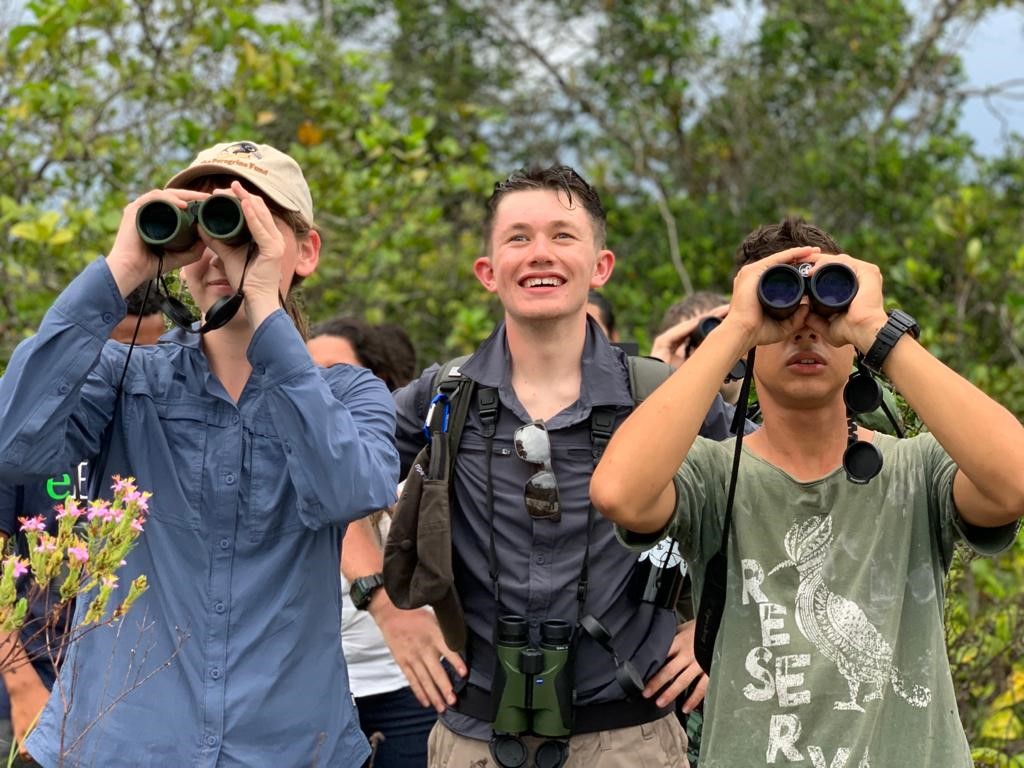As the 2023 Birdfair drew to a close and I bid a warm farewell to the ZEISS Nature Team for a second successive year, I began to reflect on what had been another successful weekend of catching up with familiar faces while also meeting new ones, all with a shared interest and passion for nature observation and conservation. Whether it be a child-like curiosity, a scientific interest, or an obsessive passion, the Global Birdfair brings the full spectrum of ornitho-inclined nature-lovers together to share knowledge, opportunities, arts, and products while simultaneously raising money for conservation projects around the world.
What started as a passive curiosity of animals featuring in various books and documentaries I was exposed to as a child, it was when I first peered through a cheap set of binoculars at the bird table in my parents’ garden that my passion for birds and wildlife really took off. Years later, in 2019, I was awarded the Cameron Bespolka Trust’s scholarship to the Cornell Lab of Ornithology Young Birders’ Event, for my untapped passion and potential in nature. It was at this life changing event where I saw some exciting new wildlife, met some amazing birders from all over the world, some incredible minds working in conservation and ornithology, and where I found direction on how to best apply my enthusiasm. I also acquired my first, and long overdue, pair of binoculars, ZEISS Terra EDs – complimentary with the event – delivered personally by Richard Moncrief, who I now have the pleasure of keeping in touch with and working alongside at Birdfair.

These first good quality optics helped thrust my hobby into a lifestyle, taking every opportunity I had for a wild excursion. While many of these trips were to Poole Harbour and Portland Bill, bird and wildlife watching in the countryside surrounding my North Dorset home increased ten-fold. I gained a new-found appreciation for observing nature on my doorstep, cherishing many of the simplest behaviours and interactions we so often overlook from some of our most common species. One such moment I can remember was from my earliest days of learning birdsong, a dunnock. With its seemingly inconspicuous plumage, it climbed onto to a single twig before me and sung, allowing the careful focusing of my binoculars onto the beautifully complex feathering of the dunnock’s eye. Here, a wave of grey plumage washes up over the face, giving way to intricate white protrusions from a chestnut cheek, drawing you eye to eye with the bird, and leaving you transfixed on a series of hypnotic melodies resonating from a dark, slender bill.
Much to my excitement, Cornell invited me to their Brazil Young Birders event in 2020, where my Terras accompanied my camera on a truly unforgettable week in which we racked up well over 200 bird species alongside vast representation of almost all other animal groups imaginable! Sharing the rainforest with young Brazilian naturalists was truly unforgettable, and while the problem of deforestation dominates global conservation efforts, I was struck by the enthusiasm and compassion by the local community for the wildlife there. The emotional moment shared between a group of young Brazilian birders and my American counterparts upon seeing the Banded Cotinga, a critically endangered bird species endemic to the Atlantic Rainforest of Brazil, is something that will stick with me for the rest of my life. A male, cobalt blue contrasted with a deep purple breast and throat around a collar, sat just metres away feasting from a fig tree. Grateful for good optics, we observed in silence, admiring the staggering plumage of such a rare species up so close.
My return to the UK saw me apply a new perspective on wildlife conservation to the most grass-roots cause that I could – ecological surveying. As a changing landscape continues to threaten what remains of a biodiversity once so central to British society, ecological consultancies work tirelessly to find solutions, compromises, and alternatives that facilitate a net biodiversity gain alongside, or instead of, what is often inevitable development.



© Lucy Hubbard, 2023
In 2022 I joined the ZEISS team as an ambassador, assisting the sales team at the Global Birdfair where I was introduced to their new thermal imaging device, the DTI 3. High quality, ergonomic and easy to use, they practically sold themselves. As a result, I found myself the owner of a DTI 3/25, as well as a top-quality pair of SFL 10x40s.
These new optics revolutionised my recreational wildlife watching experience, allowing me to observe in more detail and colour, and over many more hours of the day, than I ever had before. Additionally, both products supported my work in ecology, with higher quality optics not only adding to the overall enjoyment of wildlife surveying, but also to the reliability and accuracy or my survey work – most evident when referencing photos and videos taken on the DTI in reports.
And it is not just me benefitting from some having top-quality ZEISS optics. Sharing knowledge of the ‘Try ZEISS’ initiative has also afforded some of my university colleagues the opportunity to try out ZEISS products for a set amount of time, being offered the chance to buy them at the end. I recently returned from a field trip in Scotland in which 5 of my friends were able to use some top-quality ZEISS products with no obligation to buy – a couple of whom are considering purchase. This is one of a number of great community initiatives offered by Zeiss, something that has really impressed me since getting involved. I cannot wait to get stuck in to supporting more of these initiatives in the future, but for now, it’s back to university!